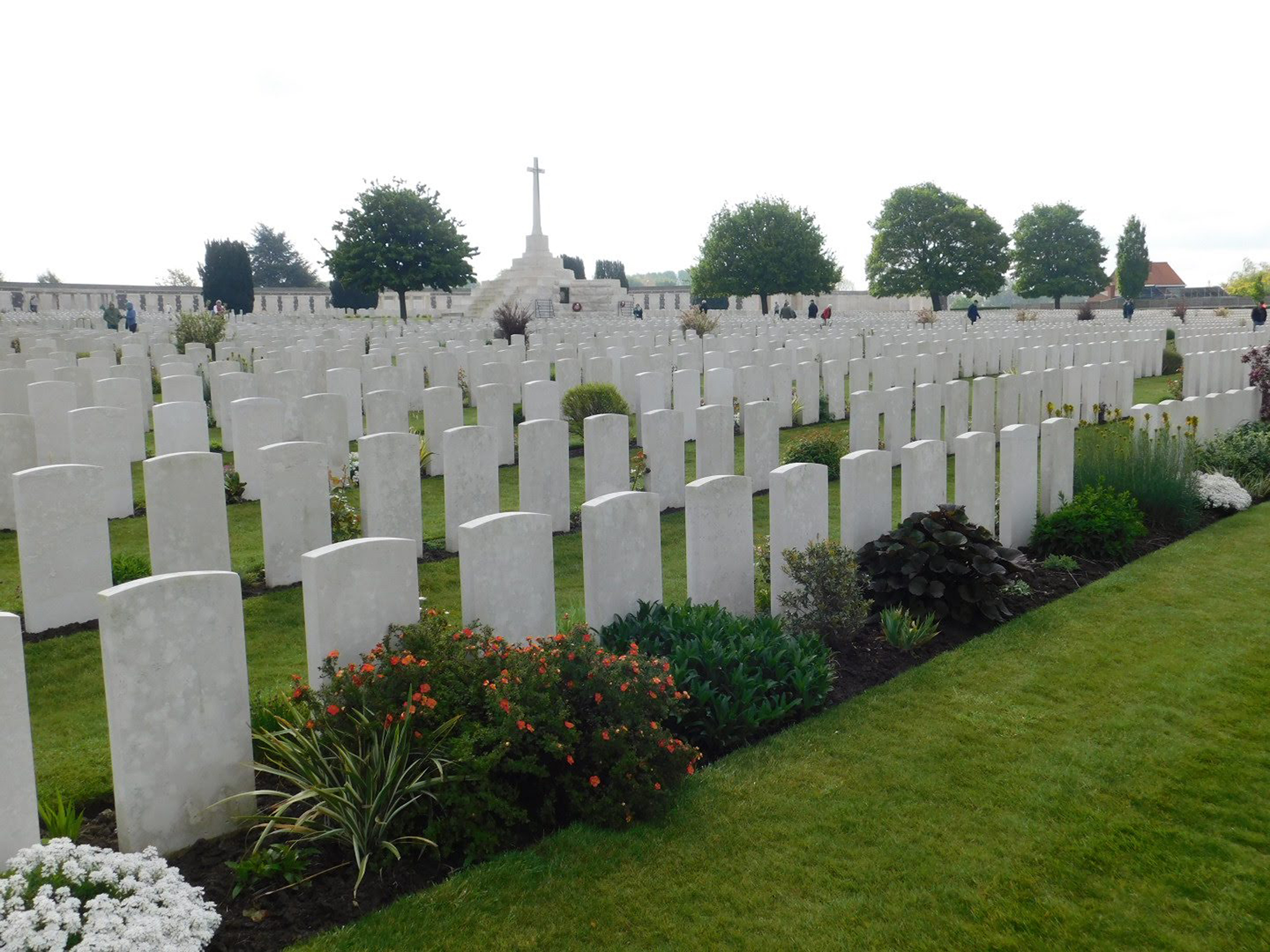by Mason Adams
World War I marked a great juncture in history, ending the Gilded Age and making way for the modern era.
The conflict forever altered the nature of warfare, with industrialization producing changes of scale in weapons, tactics, and casualties. The war traumatized Europe, but was less ruinous for the U.S., which did not enter the conflict until its final years.
The Great War left an enduring mark on Virginia Tech, too. The early university emphasized military education, so many students and graduates served on fields of battle. On the Blacksburg campus three iconic landmarks memorialize their wartime sacrifices: The Rock, which stands on the Upper Quad; War Memorial Gym, which was dedicated to Hokies who served; and the Brotherhood Pylon, which bears the names of those who died in the line of duty.
World War I transformed Virginia Tech in more subtle but influential ways as well, prompting decisions that changed the school’s direction and established a solid foundation for the future.
As Virginia Tech evolves, a simple prevailing ideal connects the global-facing university of today to its pre-war iteration as a military-focused institution—the spirit of Ut Prosim (That I May Serve).
Alumni who fought in World War I
World War I veterans with a connection to Virginia Tech totaled 2,297 in uniform: 2,155 in the Army, 125 in the Navy, 19 in the Marine Corps, six in the Coast Guard, one in the British Army, and one in the French Foreign Legion. One alumnus was awarded the Medal of Honor, seven the Distinguished Service Cross, and one the Navy Cross. At least eight were awarded the Silver Star.
The Hokies influenced the conflict through their courageous actions and leadership. Probably the most well-known is Capt. Lloyd W. Williams, Class of 1907, who commanded the 51st Company in the 2nd Battalion, 5th Marines Regiment. In 1918, Williams’ division was deployed to support the French army at the Battle of Belleau Wood. The unit arrived to find the allies retreating. A French colonel advised Williams to follow suit, but legend has it that the captain memorably responded, “Retreat, hell! We just got here!" (The first two words of that quote live on as the motto of the 2nd Battalion, 5th Marine Regiment and Alpha Company within the Corps of Cadets, of which Williams was an alumnus.)
Later, Williams led an assault at Belleau Wood. Although the mission routed the Germans, the lead Marine unit was devastated; only one of the 10 officers and 16 of the 250 enlisted men survived. Again, Williams ignored advice to retreat. During the skirmish, he was gassed and injured by shrapnel, but refused treatment. “Don’t bother with me,” Williams was heard telling medics. “Take care of my good men.” Williams died when a shell exploded as he was being evacuated from the battlefield. He was posthumously promoted to major and received three Silver Star citations and a Purple Heart.
Many Virginia Tech alumni saw combat during the final two years of World War I. Twenty-six Hokies died in service, and another 26 were wounded.
“It is important to understand that more than one-half of American deaths in World War One were caused by disease, not by front line combat, and almost all of these deaths by disease came in the final three months of the war during the Spanish influenza epidemic,” said Tom Ewing, a history professor and associate dean of the College of Liberal Arts and Human Sciences. “These proportions are slightly different for Virginia Polytechnic Institute (VPI) men. Approximately one-fifth of the names on the Pylon for World War I were men whose deaths were attributed to disease, including several men who died in Virginia before they ever left for service. Eleven of these men were killed in action or died from wounds on the front lines. The remaining deaths were due to accidents or from an unknown cause. At the time, all of these deaths were classified as war-related deaths. As we think about the meaning of military service, it is important to continue to think holistically about the costs of war.”
Although the men experienced untold hardships and bore witness to war’s grim realities, for some, resilience was manifested by retaining a positive perspective and even a sense of humor. In a survey after the war, Leonard Gaines, Class of 1917, who served as first lieutenant in the Army, noted his impressions of the fighting: “It was good fun until you were hit.”
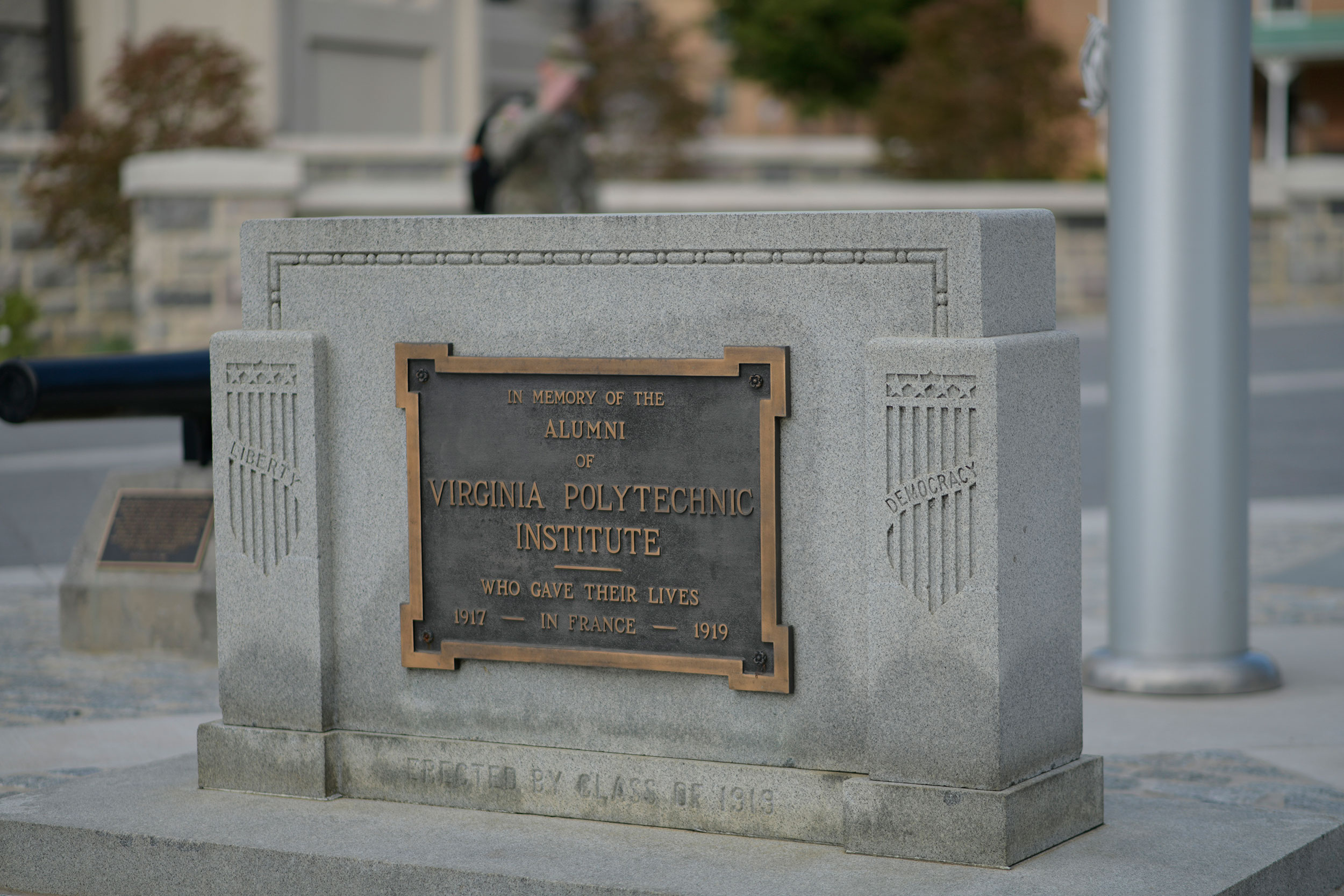
The Rock
The Rock
On July 2, 1919, Virginia Tech President Joseph Eggleston delivered his final commencement address. That same day, the Class of 1919 unveiled a stone memorial dedicated to "Our Dead Heroes Over There.” Known as The Rock, the memorial includes the names of 11 alumni who were killed in action and stands in honor of all graduates who lost their lives during World War I. According to the corps guidebook, “while not dedicated so, [The Rock] is also a symbol to all former VTCC graduates who have died in conflict.”
From that day forward, as cadets pass The Rock, they salute if in uniform or place their hands over their hearts if in civilian clothes.
That tradition was established by an editorial in the June 12, 1919, edition of The Virginia Tech student newspaper: “This thought, though simple, has a meaning which should always stand before our eyes, and it ’tis this: The memorial (not a monument) will be unveiled during Finals, and from that day hence let every student of V. P. I. salute or uncover to the memory of eleven brave warriors, and respect the small space it covers with the respect due the King of England, always being proud of V. P. I., her records, and her son.”
“The Rock’s creation introduced a distinction between combat deaths in France and deaths in other places from causes such as disease, training accidents, and deaths at sea,” said Ewing.
“At least two names seem to be missing from the Rock,” said Daniel Newcomb ’13, M.S. ’17, an alumnus and advisor who oversees “VPI in World War I,” a research project connected to Virginia Tech’s experiences in the war. “Lt. Harry Clay Williams and Priv. Maury Lake both died and are buried in France. It’s possible they weren’t listed because they hadn’t graduated or because their deaths were yet unknown at the time of The Rock’s dedication.
“If one includes those who died in training, the total number of Hokies who died from causes related to World War I is least 26,” Newcomb said. “However, a definitive number may never be known, due to the deaths of students who left Virginia Tech in the midst of their undergraduate studies to serve in the war.”
The 11 names on the Rock:
Capt. Lloyd W. Williams (Class of 1907)
Lt. Howard Thornton Barger (Class of 1916)
Lt. Robert Lewis Butler (Class of 1915)
Lt. J. Frank Clemmer (Class of 1920)
Lt. Jerome M. Cudlipp (Class of 1912)
Lt. James Wayne France (Class of 1915)
Lt. Alfred Rorer Harvey (Class of 1915)
Lt. Arthur Blackie Moore (Class of 1917)
Lt. Sylvester Baker Moore (Class of 1916)
Lt. Seth Whaley Murry (Class of 1916)
Pvt. J. Campbell Berkeley (Class of 1912)
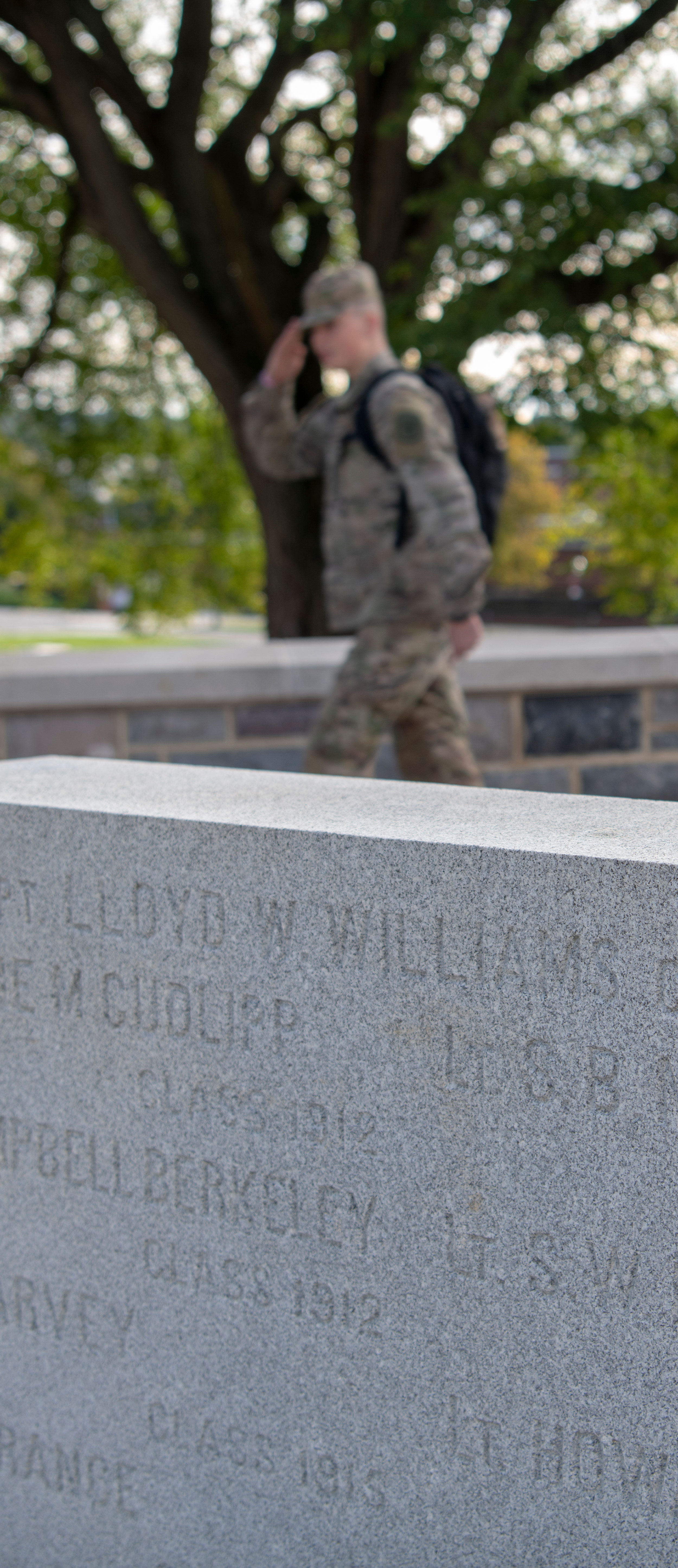
A cadet salutes The Rock.
How World War I Changed Tech
The war and the years that followed set in motion cascading effects that transformed the institution into a comprehensive modern land-grant university.
At the beginning of World War I, Virginia Tech students, all of whom were white males, were required to spend all four years of their education in the Corps of Cadets. When the U.S. entered the war in 1917, Tech and military institutions across the country became primary sources of officers.
“The American army at the start of war was only 100,000 soldiers,” said Newcomb. “By the end of the war, it was 4 million. If you went and signed up and had a college education, chances were you were going to become an officer.”
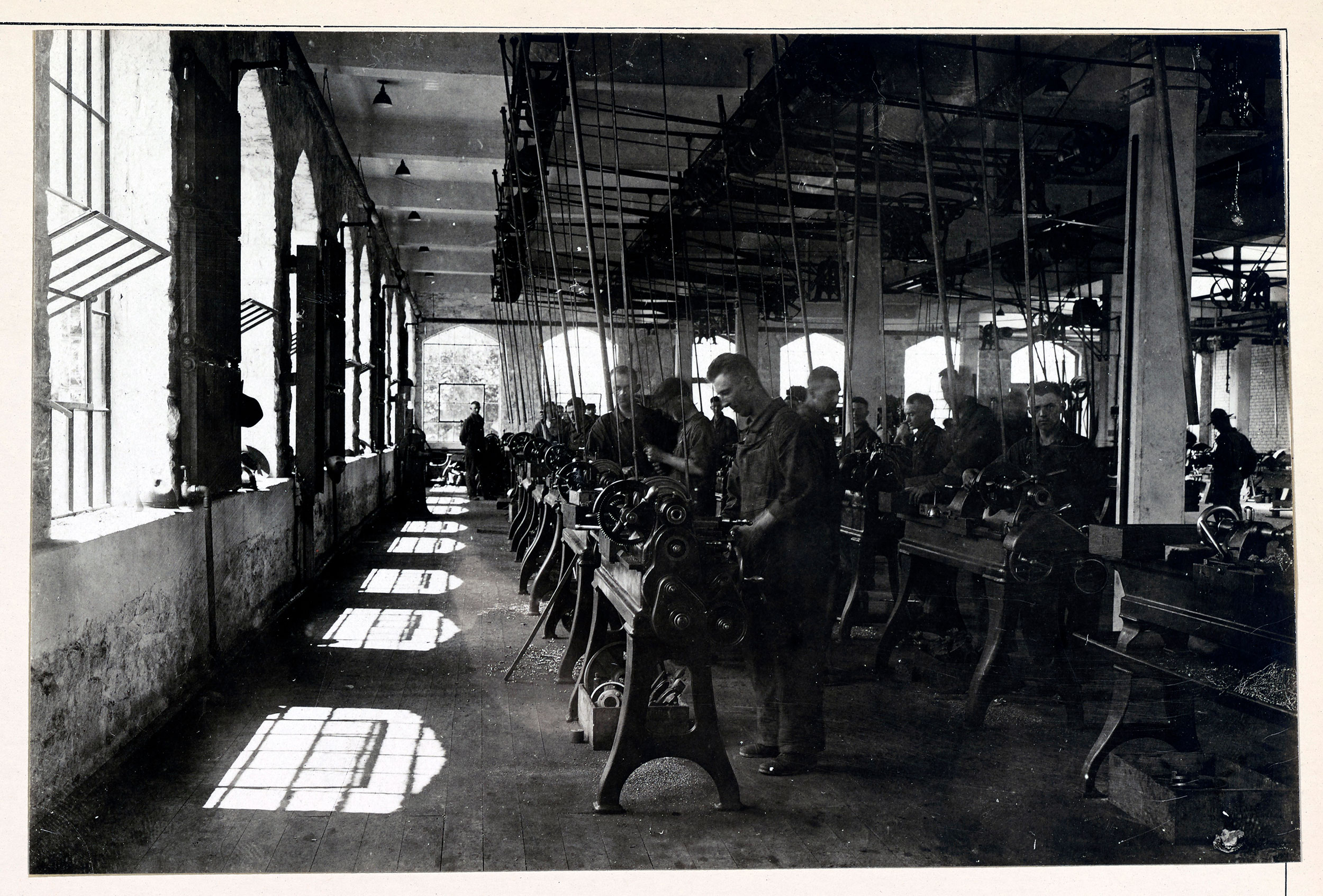
This War Department photo from the National Archives shows SATC students in the machine shop.
By the end of the war, Virginia Tech had become home to a sprawling unit of the Student Army Training Corps (SATC), a national project intended to create soldiers by simultaneously providing military training and a college education. Somewhere between 400 and 600 soldiers—about half of the total number of students at the time—were in an SATC camp at Virginia Tech when the war ended. None of them would see combat.
The years following World War I ushered in a time of transition for the university. Eggleston resigned from his post as Virginia Tech’s seventh president in 1919 to become president of Hampden-Sydney College.
Julian Ashby Burruss, Class of 1898, was named the university’s eighth president. Under Burruss, the corps requirement fell from four years to two. In a related move, Virginia Tech de-emphasized military education to advance the land grant-related fields of agriculture and engineering, which subsequently defined the university for much of the 20th century.
According to a journal article by Newcomb, a 1923 survey of Virginia Tech faculty found that many thought the required military training created problems in student life, and Burrus subsequently described the focus on military education as “archaic.” He wrote that it stunted the growth of the institution, impeded its ability to compete with other state and regional colleges, and did not prepare students for “citizenship in a democracy.”
Nearly a century later, the shifts that World War I spurred mark a bright line in the university’s history, highlighting a juncture that made possible developments that would play out over decades: the university’s outreach to returning World War II veterans in the late 1940s, the acceptance of women and African Americans in the ’50s and ’60s, elimination of the corps requirement altogether, and development of the Principles of Community, which have opened the door for a student body that is more diverse in a multitude of ways.
Student Research on Letters of Virginia Tech Alumni in World War I
Newcomb collaborated with Ewing to design a project to research the life stories of Virginia Tech alumni and students who served in the war. The resulting database incorporates information from official records and historical letters, along with personal accounts from the family members and descendants of those who fought.
“Studying the experiences of VPI men in the war raised important questions about why Americans go to war, how and why the U. S. government becomes involved in international conflicts, and how these experiences are remembered,” Ewing said. “Studying VPI in World War I has shaped my thinking about the ways that veterans today are regarded, how we remember wars that we have fought recently and are still fighting, and what kinds of questions must be asked about potential involvement in military conflicts.”
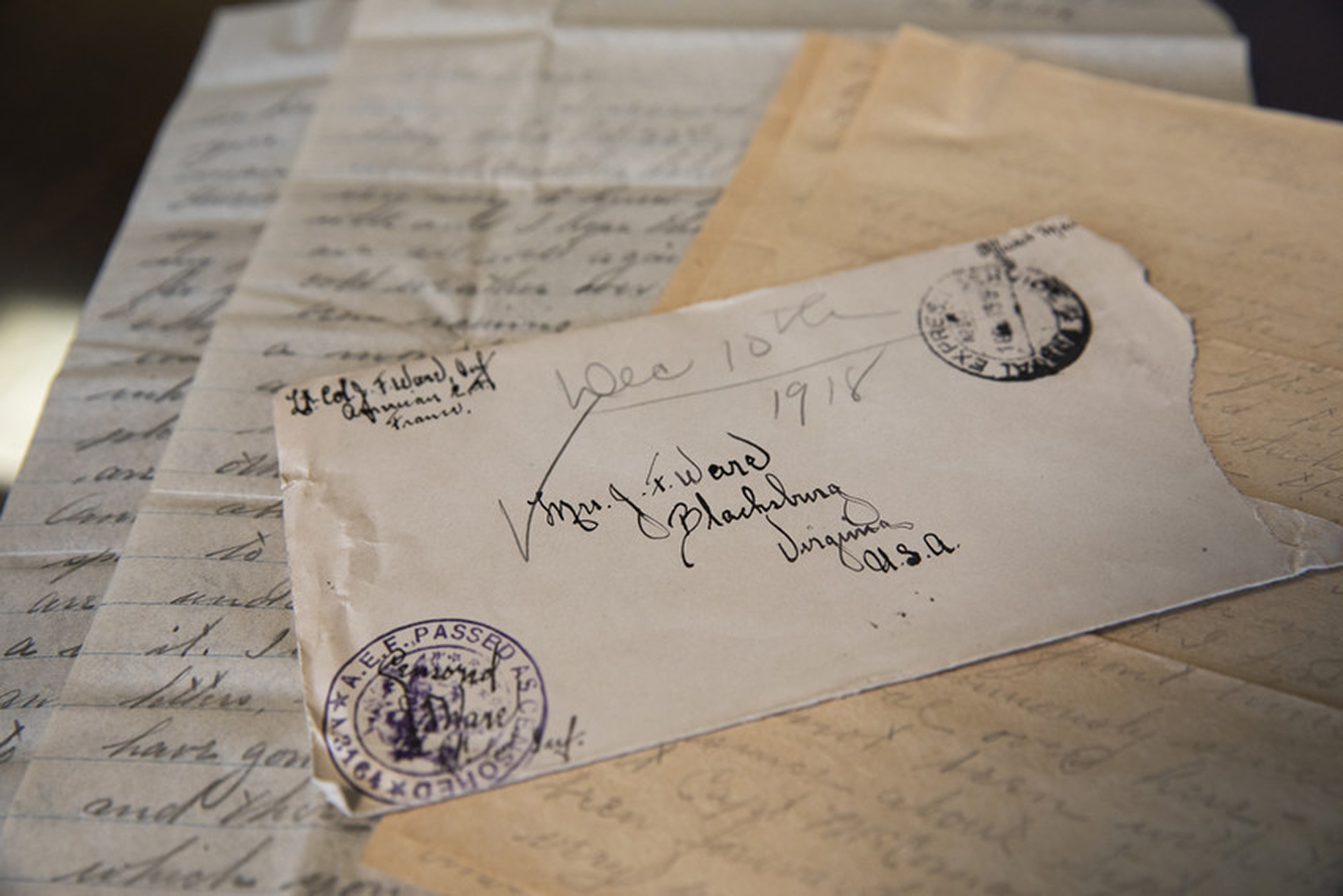
A WWI letter of Joseph Ware, whose son is the namesake of Virginia Tech’s Joseph Fulton Ware Jr. Advanced Engineering Laboratory (Ware Lab).
First-year history students in 2016 and 2017 aided the effort. By participating in the data collection, the students learned firsthand about techniques for documenting history. The 2017 class not only recorded alumni information, but drilled down into the letters of Joseph Ware Sr., Class of 1903. Ware was a professor and commandant of the Corps of Cadets from 1911 to 1914, as well as the father of the flight test engineer for whom the Joseph F. Ware Jr. Advanced Engineering Laboratory is named. The students each transcribed a letter written by Ware that had been stored in an archive in Special Collections. They collaborated on tricky or challenging excerpts and were all required to read all of the transcribed letters. The transcriptions are now available in Special Collections and may be opened to the public for future research eventually.
“We wanted these students to recognize that they have a responsibility to preserve history as much as the [upperclassmen], and that we’re going to provide them with the tools on how to do that,” said Trudy Harrington Becker, senior instructor in the Department of History. “They’re historians like us, just less experienced. We’re beginning with making sure they can work with primary sources.’”
Throughout the semester, students in the first-year experience class traced Ware’s journey to Europe through his letters to his future wife. Along the way, they learned about techniques for preserving history by performing them.
“They didn’t learn top down about World War I as a military endeavor,” Becker said. “What they learned was absolutely from the bottom: What’s going on with this individual and his colleagues and his friends and who he is serving with? We came from the bottom up.”
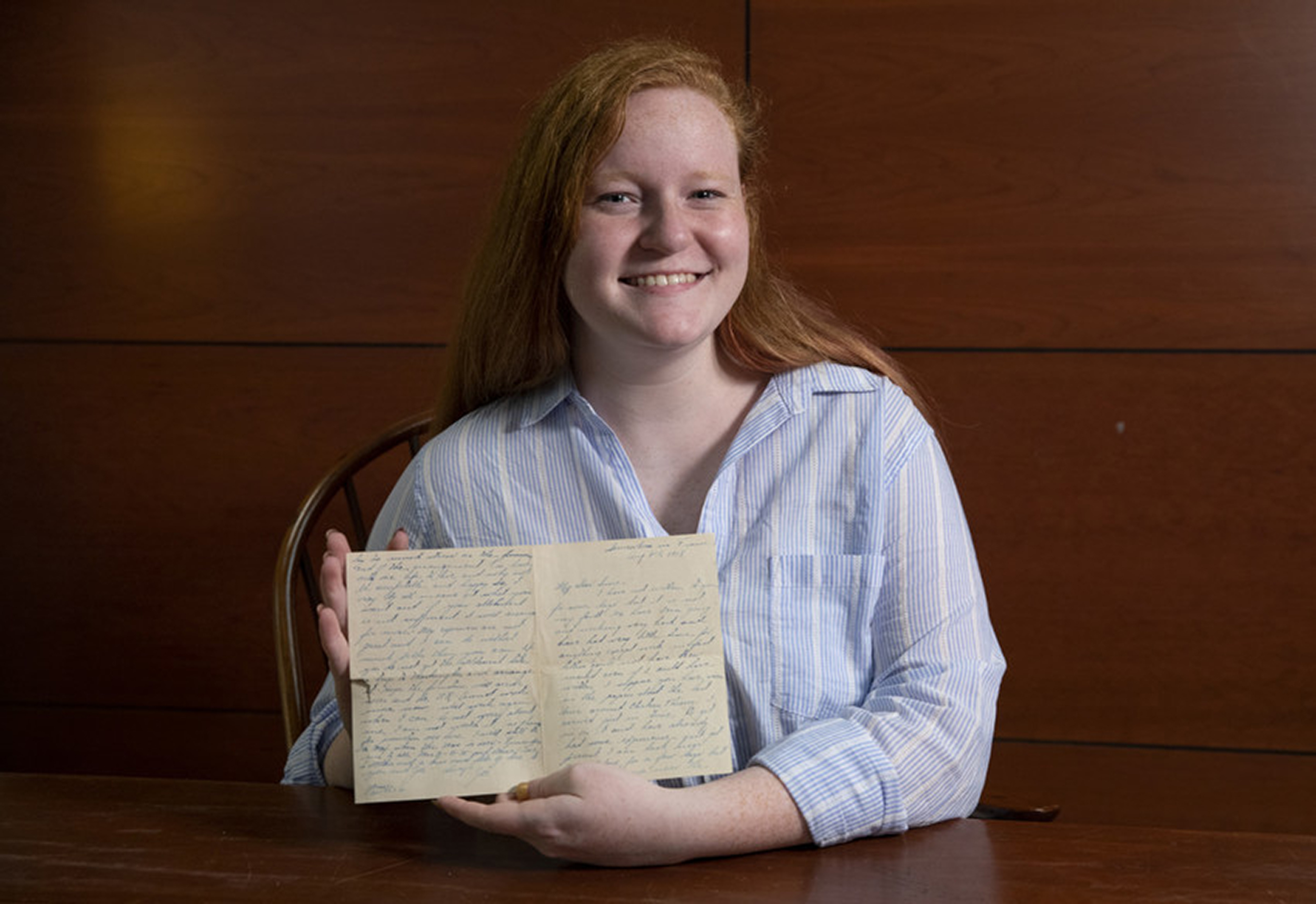
Liv Wisnewski, a sophomore history and theater dual-major, worked on a semester-long project digging into the WWI letters of Joseph Ware, whose son is the namesake of Virginia Tech’s Joseph Fulton Ware Jr. Advanced Engineering Laboratory (Ware Lab).
Liv Wisnewski, a rising junior majoring in history and theater, read two of Ware’s letters in which “he talked to his wife about their kids and their finances and how he hoped to come home soon and what he didn’t like about fighting, and what he did like about being overseas.”
Wisnewski continued her study of Ware with an independent project that extended through spring 2018. She examined Ware’s life after the war, including the disintegration of his first marriage, his extended time in Europe, and his eventual return to the U.S.
“To read the letters of someone who lived such a different life from me—what brought him joy, what brought him pain, what made him feel worthless, which he wrote several times—was interesting,” Wisnewski said. “It reinforced what I already enjoyed about history: The idea that people have always been people and have always had concerns and small happinesses, and other things they experience differently than anyone else.”
The class and project developed Wisnewski’s skills as a historian and deepened her appreciation for Virginia Tech.
“Now when I walk past [The Rock], I have a sense of respect and a new sense of pride for it,” Wisnewski said. And the inscriptions on The Rock and the Brotherhood Pylon now represent more than just a list of names for her. “These people existed and went to school here and weren’t just figures in history who went off to war. They were young men who lived lives and had families and people they cared about. That’s really what’s interesting to me.”
Researchers Recreate a French Battleground
For several weeks in February and March, the fourth floor of Newman Library hosted one of the bloodiest battlegrounds of World War I: the French village of Vauquois. Pocked with underground tunnels, Vauquois was pummeled by artillery fire from 1914 to 1918.
Funded by a grant from the Institute for Creativity, Arts, and Technology, Virginia Tech researchers visited Vauquois in 2016. Using laser scanning and photogrammetry, the team re-created the underground passages in a virtual reality environment, then constructed a mock shaft complete with era artifacts.
“All of this is rolled together to create an immersive environment that allows people to learn what it was like to be there at Vauquois before and during the war,” said Todd Ogle, the executive director of applied research in immersive environments and simulations for University Libraries, who worked with colleagues from the VT Visualizing History Team to develop the virtual experience.
The Vauquois VR experience traveled to the Smithsonian National Museum of American History in Washington, D.C., as part of the 2019 ACCelerate festival.
Ogle said the project offered a three-dimensional opportunity for teaching history that resonated with a wide range of age groups, including Blacksburg-area school children who visited the university campus to participate in the experience. He also noted the benefits of the exercise in developing virtual-reality experiences from a transdisciplinary team.
“It’s really an activity that typifies the sort of research and development that can happen in [Virginia Tech’s] Creativity and Innovation District and brings together faculty and students from a number of disciplines,” Ogle said. “You had people from computer science, education, libraries, visual arts, and performing arts all working together to create this virtual experience.”
A century after the Class of 1919 dedicated the Rock to those who died, World War I continues to inform Virginia Tech’s past, present, and future. The Great War claimed the lives of more than two dozen Hokies and created ripple effects with profound consequences.
